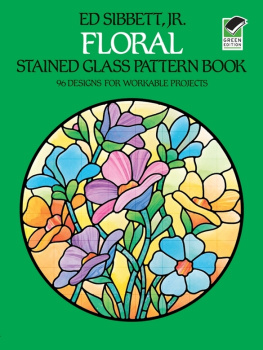Elizabeth Wilhide - The Complete Pattern Directory: 1500 Designs from All Ages and Cultures
Here you can read online Elizabeth Wilhide - The Complete Pattern Directory: 1500 Designs from All Ages and Cultures full text of the book (entire story) in english for free. Download pdf and epub, get meaning, cover and reviews about this ebook. year: 2018, publisher: Black Dog & Leventhal Publishers, genre: Romance novel. Description of the work, (preface) as well as reviews are available. Best literature library LitArk.com created for fans of good reading and offers a wide selection of genres:
Romance novel
Science fiction
Adventure
Detective
Science
History
Home and family
Prose
Art
Politics
Computer
Non-fiction
Religion
Business
Children
Humor
Choose a favorite category and find really read worthwhile books. Enjoy immersion in the world of imagination, feel the emotions of the characters or learn something new for yourself, make an fascinating discovery.

- Book:The Complete Pattern Directory: 1500 Designs from All Ages and Cultures
- Author:
- Publisher:Black Dog & Leventhal Publishers
- Genre:
- Year:2018
- Rating:3 / 5
- Favourites:Add to favourites
- Your mark:
The Complete Pattern Directory: 1500 Designs from All Ages and Cultures: summary, description and annotation
We offer to read an annotation, description, summary or preface (depends on what the author of the book "The Complete Pattern Directory: 1500 Designs from All Ages and Cultures" wrote himself). If you haven't found the necessary information about the book — write in the comments, we will try to find it.
An essential resource for any designer, crafter, artist, or historian, THE COMPLETE PATTERN DIRECTORY is the most comprehensive, practical, and beautiful directory of patterns throughout history, covering all periods, styles, and cultures.
Throughout history, patterns have come in countless permutations of motif, color, and scale. From the first rhythmic marks pressed onto clay vessels, to the latest digital design, pattern-making has been an essential part of the decorative arts since time immemorial. With 1500 illustrations of patterns from all ages and cultures, THE COMPLETE PATTERN DIRECTORY is not only a visual feast, it is the most comprehensive resource available on the subject. The book is arranged thematically according to pattern type, with chapters on Flora, Fauna, Pictorial, Geometric, and Abstract designs. Each pattern includes the name of the pattern, the year of its creation, and a brief description. The categories are supplemented by in-depth features highlighting the work of key designers including William Morris, Sonia Delaunay, Charles and Ray Eames, Lucienne Day, and Orla Kiely, as well as sections detailing the characteristic motifs of key period styles from Baroque to Art Deco.
Elizabeth Wilhide: author's other books
Who wrote The Complete Pattern Directory: 1500 Designs from All Ages and Cultures? Find out the surname, the name of the author of the book and a list of all author's works by series.












